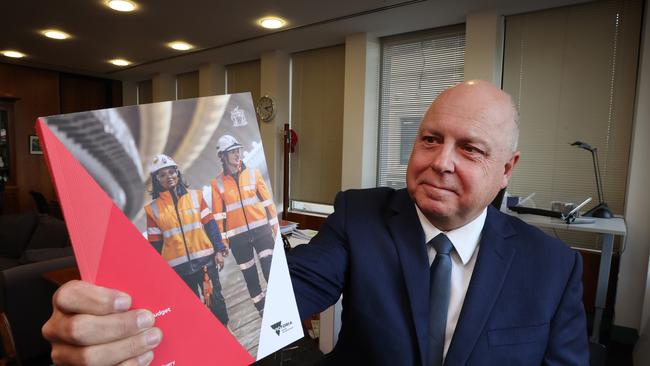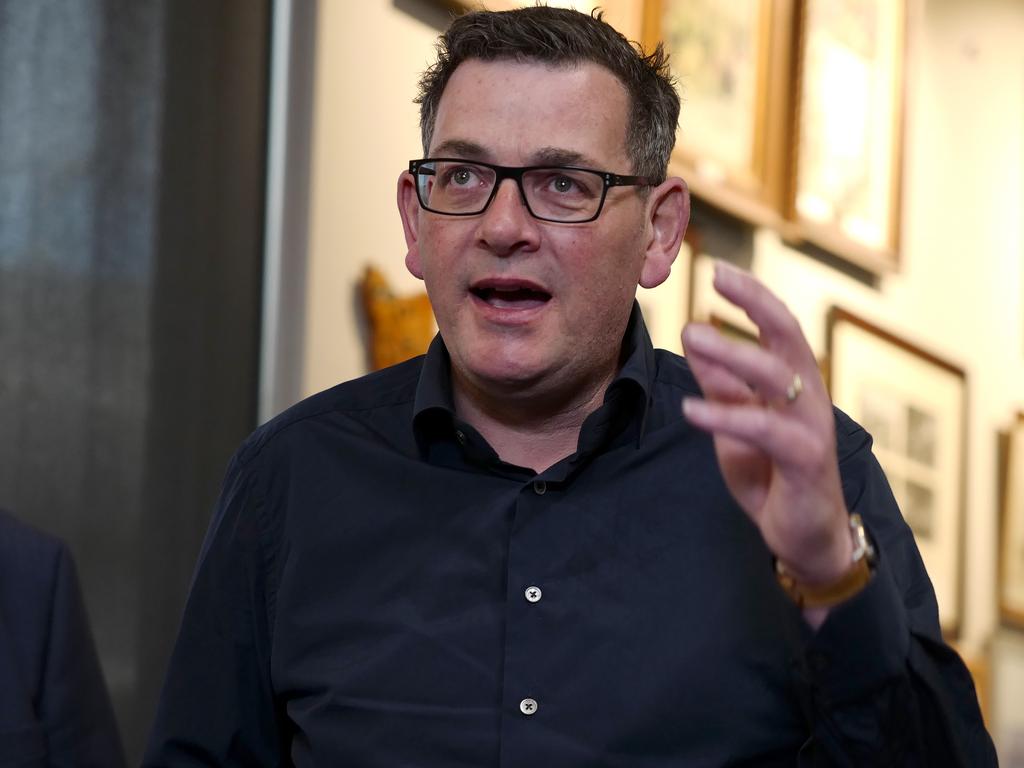The big problem with Victoria’s budget
It takes a lot of chutzpah to trumpet a “Covid debt repayment plan” as part of a big-taxing budget that doesn’t actually repay any debt.

It takes a lot of chutzpah to trumpet a “Covid debt repayment plan” as part of a big-taxing budget that doesn’t actually repay any debt.
The “treading water plan” would be a better moniker for Victoria’s budget, which hit around 4000 big businesses and 380,000 landlords and holiday home owners with an extra $8.6bn in taxes, but projects net debt to increase over the coming years.
Treasurer Tim Pallas has boasted he is “paying off the state’s Covid credit card”, which he puts at $31bn in additional spending to help alleviate the ravages of lockdowns. “We’re not the only government in this position. But we are the only government with a plan to manage it,” he said.
Yet the budget papers show net debt will rise from $116.7bn in 2023, to $135.4bn in 2024, before climbing to an estimated $171.4bn at the end of 2027.
And as debt climbs, doing business in Victoria is getting less attractive. The latest ABS figures from 2021-22 show Victoria already had the highest taxes per capita in the country.
The latest tax grab on companies with payrolls of more than $10m is on top of the existing $3bn mental health levy from 2021.
“We think big business has the ability to pay a modest additional tax,” Pallas said.
It comes as no surprise the highest-taxing state is pulling the tax lever again.
Large companies are unlikely to up sticks to a lower-taxing jurisdiction overnight, especially when the Victorian economy is doing so well.
But gaining a reputation as a highly taxed jurisdiction can start to influence boardroom decisions over time, particularly when taxes are likely only heading one way – up.
It’s laughable that Pallas has been trying to pin the blame for the nation-leading debt on the Reserve Bank. You might as well blame governor Philip Lowe for the failures in the state’s hotel quarantine system.
The fact is Dan Andrews’s government mismanaged the health crisis. The harshest Covid restrictions came with the worst health outcomes, and with the biggest economic hit.
Already a heavily indebted state leading into the pandemic, the longest lockdowns in the world punched an even bigger hole in its finances.
S&P Global Ratings downgraded Victoria’s credit rating by two notches in December 2020, versus a single notch in other states, leaving it the lowest-rated state or territory. Still, the state is rated AA, and there is no sign Victoria is about to fall off any fiscal cliff.
Gains might be marginal, but smaller deficits in coming years leave more “fiscal headroom”, according to S&P, even if there’s no prospect of returning to the top AAA rating any time soon.
The state will stay afloat, but future governments will need to do more to address the very high levels of debt that have been a hallmark of its finances from well before the pandemic.







To join the conversation, please log in. Don't have an account? Register
Join the conversation, you are commenting as Logout